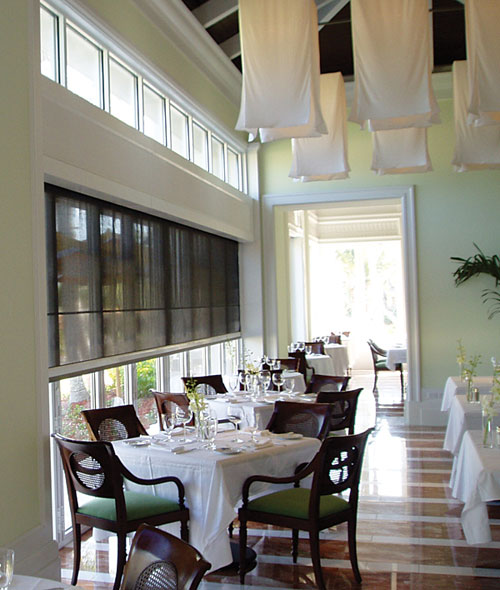Comfort on Demand
As efforts are made to create non institutional health care environments, patient rooms, in particular, are being designed to connect with the outside world. Operable windows and screens that offer insect and glare protection - and then retract to restore unobstructed views - can be part of that scenario.
Greg Mare, AIA, Principal at Anshen + Allen, an international architectural practice in healthcare design, finds a growing acceptance of exterior screens to afford insect protection and ventilation. "On every project we have a discussion about screens. Some clients need to have evidence of engineering scenarios, particularly that the operable windows won't upset the HVAC balance. And in every example, and in our own engineering research, integration of operable windows with the HVAC system has not been an issue," says Mare, who reports that feedback from patients and their families has been overwhelmingly positive. "They appreciate the opportunity to have fresh air." Retractable screens could also have the added benefits of less dust and maintenance for clean environments.
Mark Perepelitza, AIA, LEED AP, an associate partner at ZGF in Portland, also notes a gradual trend toward more operable windows as architects try to design increasingly sustainable buildings. "As operable windows are more accepted to provide natural ventilation, in some parts of the country retractable screens will be part of the equation to protect from insects, especially for building types such as hotels and condominiums," says Perepelitza, who also notes screens' role in reducing solar heat gain and glare.
Insect Protection for a Healthy Environment
In addition to their annoyance factor, insects can pose health challenges. Mosquito-borne diseases are among the world's leading causes of illness and death today. The World Health Organization estimates that more than 300 million clinical cases each year are attributable to mosquito-borne illnesses. The Centers for Disease Control (CDC) says that the West Nile virus first appeared in North American in 1999 and has since been reported throughout Canada, Mexico, the Caribbean and Central America, and in all U.S. states except Hawaii, Alaska, and Oregon.
 |
Retractable screens used in conjunction with a folding wall system keep diners comfortable. Photo courtesy of Phantom Screens |
Â
According to the Maryland Department of Agriculture, vectors of all major mosquito-borne disease continue to thrive in the United States and with the decline of vector control programs, mosquito-borne diseases are a growing threat throughout the Americas. The department further states that for the first time in nearly 50 years, endemic cases of dengue fever and malaria are in the United States. The CDC identifies properly installed screens in good repair as one way to address the mosquito problem.
Insect screens can dramatically impact the look of the building facade - especially if wickets are used in order to access window handles. All types of screens will prevent insects from entering so the reason for specifying a retractable screen versus a fixed screen stems from other benefits: clean aesthetics and maximizing daylight when not in use. With their simple clean lines, retractable screens have a more pleasing, uniform appearance than fixed screens that permanently darken glazing.









